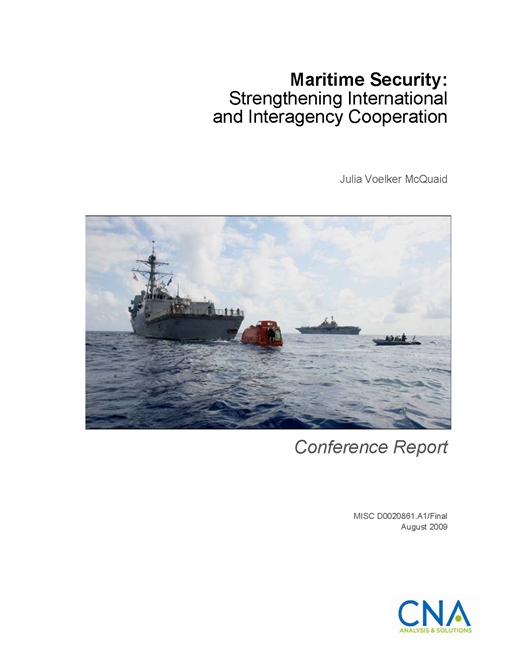The world is facing a substantial range of maritime security challenges. While piracy off the East Coast of Africa has attracted the most attention over the past year due to the saliency of its threat to world commerce, weaknesses in maritime security capacity are resulting in a multitude of destabilising effects and loss of significant revenue in many developing countries. The international maritime community should attempt to build on the initiatives undertaken to combat Somali piracy in order to fashion long-term, sustainable solutions to a broad range of maritime security challenges. Additionally, the international maritime community should consider the following in its efforts:
- Military capability alone will not solve maritime security challenges; there must be a collective and coordinated effort across multiple sectors. Nonetheless, naval forces have an important role to play, and some believe this will require a new generation of small, fast, and cheap vessels to enhance their ability to do so.
- Regional co-operation and capacity building are likely to provide the most effective basis for long-term, sustainable solutions. The international maritime community should consider focusing on key regions where maritime security is weak or absent and working in close partnership with regional organisations to help build local capacity for maritime security.
- Assistance for local capacity building on the part of international donors needs to be complementary and synergistic, with intense staff level coordination carried out among donors and with recipient countries.
- Increased information sharing is the key to improved maritime situational awareness, which constitutes the greatest “force multiplier” in meeting maritime security challenges. A culture of information sharing must be advanced within and between all maritime stakeholders, including government and industry, which need to work together to understand better each others’ priorities and equities.
- Steps must be taken to enhance interlinking of existing maritime surveillance systems as well as to build wider interoperability into future ones, and efforts made to define better the scope of shareable information in an open architecture.
APPROVED FOR PUBLIC RELEASE. DISTRIBUTION UNLIMITED.
Details
- Pages: 24
- Document Number: MISC D0020861.A1/Final
- Publication Date: 4/1/2009
